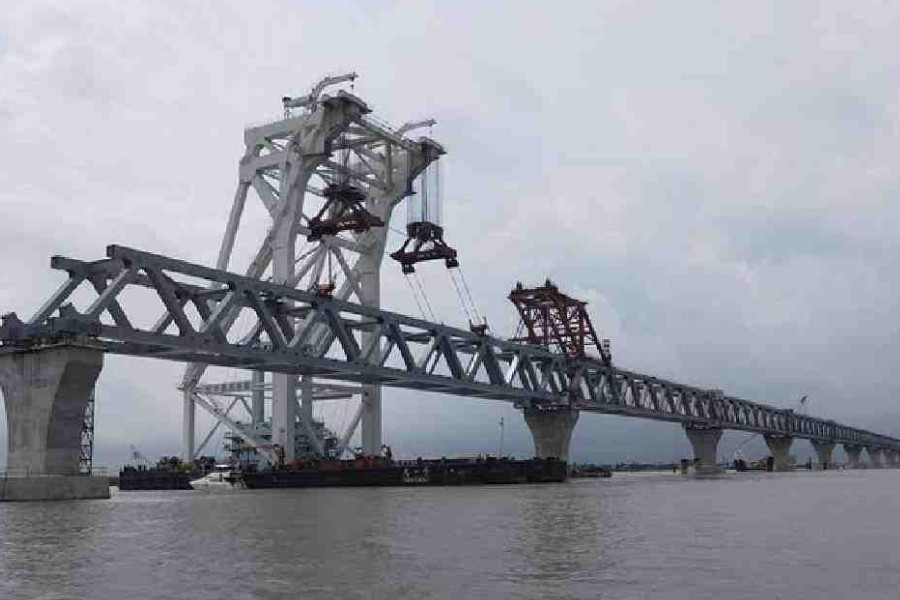Pending the final celebration, which is expected to take place by the end of next year, the nation has reasons to be elated when the last span was placed on the country's longest Padma bridge last Thursday. With the installation of the span, the physical structure of one of the world's longest road-cum- rail truss bridge got the final shape and became visible. The concrete and metal structure not only links the underdeveloped south and southwestern regions with the rest of the country, but it also symbolises the nation's strong resolve and defiance.
A bridge over the mighty river, the Padma, has always been a dream project, primarily because of the vastness of the river and the prohibitive cost involved in its implementation. The project was conceived long ago, but most people considered it to be an impossible proposition as the river is turbulent and its bed in many places highly treacherous. The ball, however, started rolling in 1998-99 when the pre-feasibility study was conducted over building a bridge over the Padma. The construction of the bridge over another major river Jamuna, to some extent, provided an impetus to the efforts to make an 'audacious' dream come true.
The project, however, suffered a major jolt at the very inception when the World Bank (WB) had announced its withdrawal from the project making an unfounded allegation of corruption. The WB had pledged substantial funding for the mega project. The withdrawal was bewildering, no doubt, but Prime Minister Sheikh Hasina had demonstrated unusual courage and firmness when she decided to execute the project with funds from the state coffer.
The head of the government took the implementation of this huge and cost-intensive project as a challenge. Many had doubted the success of the project then, but they are now proved wrong. Vehicles are expected to cross the river using the bridge by the end of next year and trains in the year 2024. With the start of vehicular movement through the bridge, the economy stands to gain, notably.
The WB estimates the gross domestic product (GDP) will grow by 1.23 per cent annually. Thedevelopmentally laggingsouth and southwestern regions of the countryare expected to witness an economic transformation that is set to improve the life and living conditions and reduce poverty there. The Padma bridge will shorten the travel time for both people and merchandise to a minimum, thus, paving the way for investments to rush into these regions.
As it happens in the case of most development projects in this part of the world, both the cost and time of the Padma bridge project have overrun the targets. The Covid-19, and some other technical issues, including change of designs, were responsible for the delay. The delay has been accompanied by a hike in the project cost---the cost has gone up by nearly three times from the original one. Depreciation of taka and a substantial rise in expenditure on river training, among others, pushed up the cost of the bridge. Most people, it seems, may not bother much about it since the long-term benefits of the bridge are expected to outweigh the cost.


